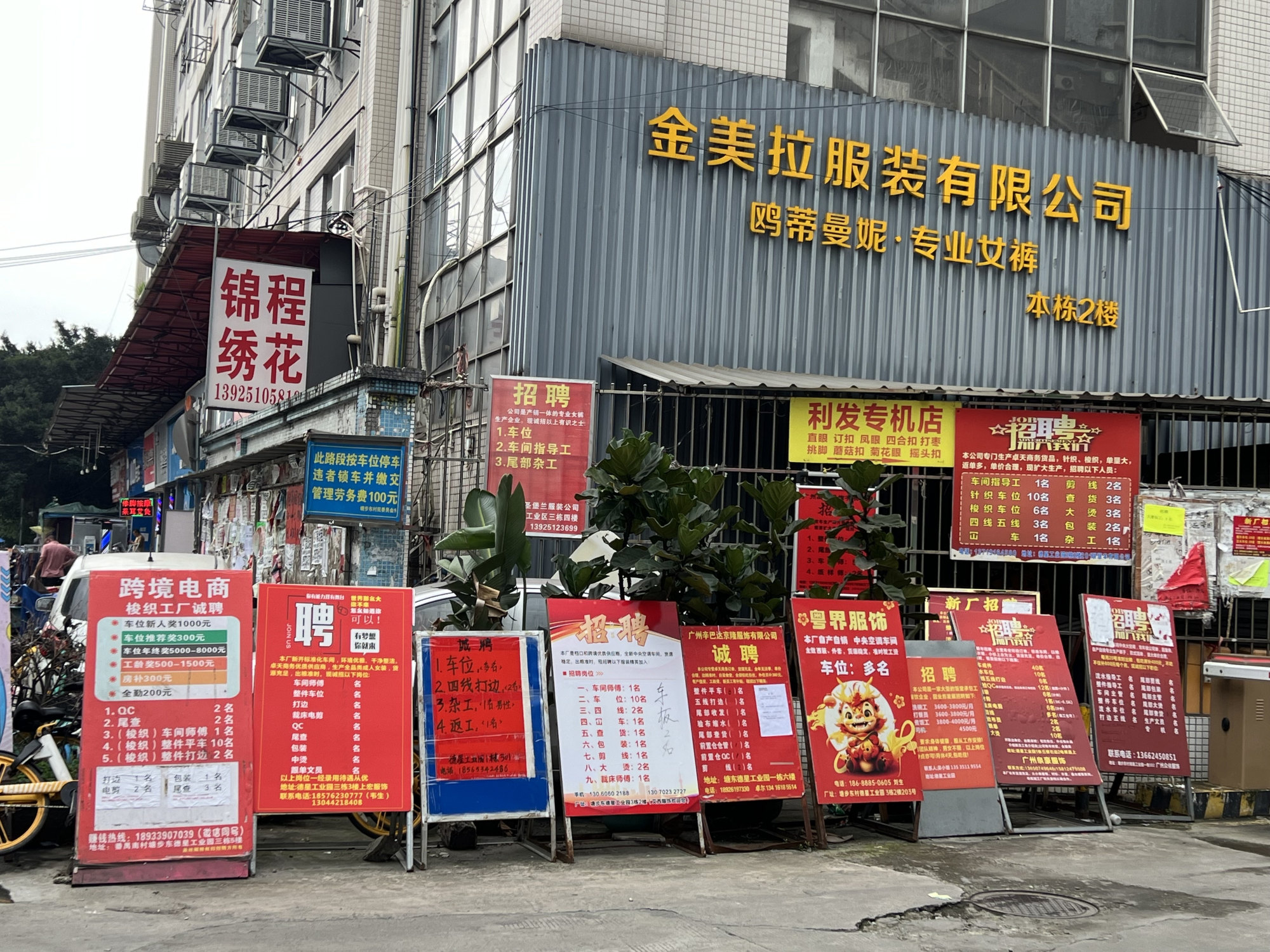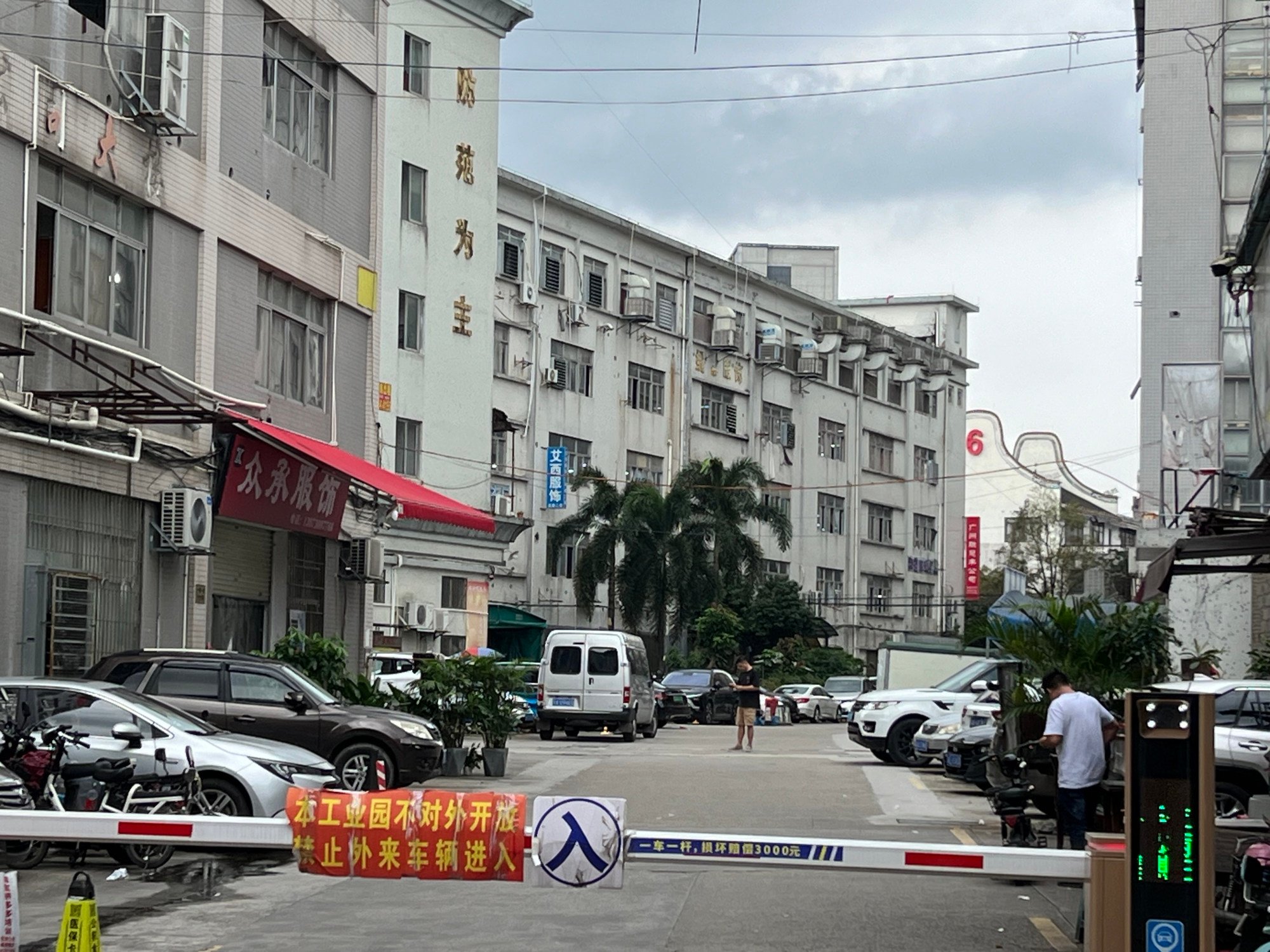Fashion
In China’s Guangzhou, a web of factories gives rise to Shein

Hidden in the town of Nancun in Guangzhou’s Panyu district, a labyrinth of residential buildings and small factory compounds, is Shein’s sourcing centre. At the nearby Dexing Industrial Park, walls and walkways are covered in recruitment ads for workers, who are needed to fill the flood of orders coming from Shein.
One factory looking for “cross-border trade” sewing workers promises a new-hire bonus of 1,000 yuan (US$138), an annual bonus of 8,000 yuan and a rent subsidy of 300 yuan. Another facility, in need of “unlimited” labour supply, boasts of “central air-conditioning” and “timely salary payment”.
A drab, five-storey matchbox building houses at least seven workshops – Shanghong Garments, Hongze Clothing, Yuejie, Hongshi Clothing and Aixi Fashion, according to the signs. It is just one of hundreds of similar buildings across Panyu, home to over 7,000 manufacturers, according to government data.
Shein and its rivals are the beating heart that keeps these small factories running. All day long, trucks plastered with Shein logos stop by to load up on freshly sewn boxers and cocktail dresses. Many of these products will soon find their way to consumers halfway around the globe, who bought them with a tap on their smartphones.
“Shein’s core advantage lies in its agile supply chain, which is both fast and flexible, and its large existing user base,” said Yao Kaifei, CEO and founder of BrandAI, a software-as-a-service start-up focusing on cross-border e-commerce.
But Shein has not always enjoyed the tight relationship it now has with suppliers.
In the company’s early days, its founder Xu Yangtian and supply chain head Henry Ren Xiaoqing spent a lot of time visiting garment factories in Guangzhou in person to secure contracts.
Many suppliers initially rejected Shein because it placed orders in quantities far smaller than those from traditional exporters, and only reorders if an item proves to be popular with shoppers, said Liu Mingguang, a former supply chain adviser for Shein.
The company typically asks factories to produce around 100 pieces of a new item, while other clients usually request 10 to 20 times more, according to the manager of a denim factory that worked with Shein. Orders from Shein, which sells low-priced clothing from US$5 tank tops to US$20 jeans, are also less lucrative.
Shein’s orders generate a gross profit margin of around 6 per cent, compared to 10 to 20 per cent for those from other customers, the manager said. Adding to the troubles, Shein’s tight delivery deadlines often force factories to pause production for other clients and work overtime.
But slowly, Shein managed to sign up an extensive network of manufacturers by doing what many of its peers fail to: always paying on time. The trust that it has built with suppliers eventually gave it an edge over competitors, as shoppers worldwide became drawn to Shein’s seemingly endless selection of budget-priced clothing that is in tune with fashion trends.
“An agile supply chain and connected-commerce capabilities are needed to sustain [Shein’s] success in an ever-changing marketplace,” said Derek Deng, a senior Bain partner in Shanghai. “Sustainability can be achieved when the company can create a synergy between its supply chain and its distribution channels to adapt to fast-changing local market needs.”
To manage its complex web of suppliers, Shein developed an in-house digital system and requires new partners to attend training held by its supply chain management department.
Through a website called Geiwohuo, meaning “give me goods” in Mandarin, sellers on Shein can access a wide range of data, including product lists, orders and inventory management, according to documents provided by a supplier.
When a product sells well and inventory runs low, the system automatically reorders from factories. This allows Shein to restock in seven days, compared to 14 days at Spanish fashion giant Inditex’s Zara, according to suppliers.
Alibaba owns the South China Morning Post.

Shein also faces growing competition from rivals. Amazon.com recently launched a budget storefront featuring low-priced clothing, home goods and other items, allowing Chinese sellers to ship directly to US shoppers.
To stay competitive, Shein is striving to attract a diverse array of merchants onto its platform, which would allow it to offer a bigger variety of goods ranging from beauty and skincare products to pet supplies, home decor, toys and small appliances, targeting mainly female consumers.
The company last year established a business development team dedicated to this initiative.
If Shein only focuses on its own brands like before, growth will hit a ceiling, said one of the company’s business development managers based in Shenzhen, who declined to be named because he was not authorised to speak to the media.
Shein needs to expand the categories of merchandise it offers to seize a larger market share, said the manager, who is responsible for recruiting new sellers and supporting new joiners. His job performance is tied to the number of merchants he can bring in.
Miao Miao, Shein’s chief operating officer, has been seen at supplier events but rarely speaks publicly. An employee who manages sellers on Shein said he was surprised when the executive privately praised him at a merchant recruitment event.

But as Shein pushes forward its plan for an initial public offering (IPO), the company will need to be more open about its operations.
Just as merchants in Guangdong were initially hesitant to work with Shein, the fast-fashion giant will now have to convince investors it can deliver consistent sales.
“Shein must seek growth opportunities and differentiate itself while maintaining its profits,” said BrandAI’s Yao.







:max_bytes(150000):strip_icc()/roundup-writereditor-loved-deals-tout-f5de51f85de145b2b1eb99cdb7b6cb84.jpg)


